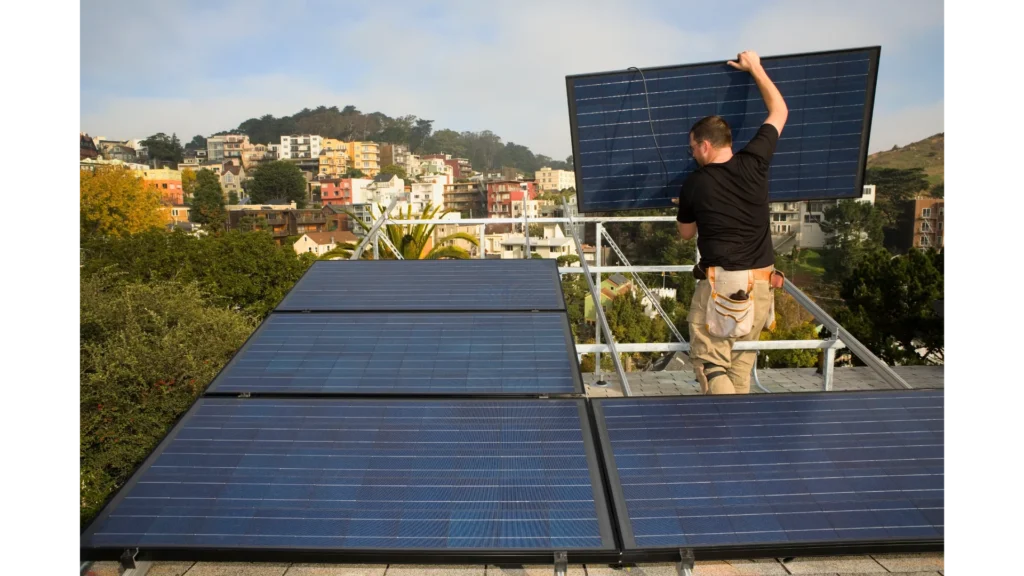
Solar energy is a renewable and sustainable source of power that has been gaining popularity in recent years. As solar panels become more affordable, homeowners and businesses increasingly turn to this clean energy solution as an alternative to traditional electricity sources. However, choosing the best Mounting Options for Solar Panels can be crucial in determining their efficiency and longevity. Factors such as sunlight exposure, metal roofs, roof attachments, and slope roofs should be considered when selecting the proper mounting system for your solar panels.
Several types of mounting options are available for solar panels, each with its own advantages and disadvantages. From roof mounts for slope roofs, metal roofs, and tile roofs to ground mounts to pole mounts, it is important to understand the differences between these options to decide which one will work best for your specific needs. Factors such as tilt angles, tracking systems, cost considerations, sunlight exposure, and environmental factors should also be considered when selecting a mounting option for your solar panels. This article will explore the different mounting options for solar panels and provide recommendations based on these factors.
An appropriate mounting scheme is crucial for photovoltaic modules’ effective installation and optimal function. Factors to consider when choosing a mounting option include the type of roof, such as slope roofs, wind and snow loads, local building codes, and the orientation and tilt angle of the solar panels. The installation process also significantly determines which mounting option is best suited for your solar panel system. Ballasted mounts are one of the solutions available for installations on flat roofs, while attachments are necessary for installations on pitched roofs.
One important factor to consider when selecting a mounting option is the type of roof on which the solar panels will be installed. Different types of roofs require different types of mounts, such as ballasted or penetrating mounts. For example, flat roofs typically require ballasted mounts that use weights to secure the panels, while sloped roofs may require penetrating mounts that attach directly to the roof structure. Railed systems are also a popular solution, using rails and attachments to securely fasten the panels in place.
Another critical consideration is wind and snow loads in your area. High winds can cause damage to improperly secured solar panels, while heavy snow loads can put excessive weight on your roof structure. Choosing a mounting option that can withstand these weather conditions without compromising safety or performance is essential. Make sure to select durable racking attachments and products that are compatible with your roofs.
Local building codes also play a vital role in determining which mounting options for solar panel systems are available on roofs. Some areas have strict regulations regarding rooftop installations that may limit your choices of racking and rails or require additional permits or inspections for the products used.
In conclusion, selecting an appropriate mounting scheme is crucial for ensuring your solar panel system’s optimal performance and safety. By considering factors such as roof type, wind and snow loads, local building codes, and installation process requirements, you can choose a racking and rails system that meets both your needs and those of your environment. Don’t forget to credit the image source when selecting your mounting system.
Roof mounts with racking and rails are among the most popular options for securing solar energy systems on a building’s rooftop. This mounting option involves attaching the panels directly onto the roof using bolts or brackets, along with the use of racking and rails. Roof mounts with racking and rails have become increasingly popular because they maximize space utilization and reduce installation costs.
Roof mount installations offer several benefits that make them an attractive choice for many homeowners, especially those looking for solar panel arrays. With the use of solar mounts, solar panel mounts, and solar racking, homeowners can easily install and secure their solar panels on their roofs.
They provide stability and security to solar panels when roof mounted, reducing the risk of damage from high winds or other weather conditions. This is especially important for metal roof attachments and shingle roofs.
Roof-mounted solar panels with racking are less visible than ground-mounted ones, making them ideal for those who want to maintain a clean aesthetic look on their property.
Roof mounts can also improve energy efficiency by providing shade to areas of the roof that receive direct sunlight, making them ideal for solar installations and solar panel arrays. These solar products can be easily installed on a rooftop solar array, maximizing the energy output and reducing electricity bills.
Despite its advantages, there are also some drawbacks to consider when choosing a roof mount installation. One significant concern is that drilling holes into your roof may be problematic for those concerned with potential leaks or damage. Additionally, if your home has an older roofing system that needs replacement soon, it may be more practical to wait until after this replacement before installing solar panels. Another consideration is the racking system used for the installation, which should be carefully selected to ensure stability and durability.
Choosing a mounting option for your solar panels is an important decision that requires careful consideration based on various factors such as location and budget. While roof mounts present some disadvantages like possible damages caused during installation and concerns about additional repair needs due to wear over time, they remain one of the most common options available today due to their cost-effectiveness and space-saving features. Ultimately, each homeowner must choose what works best for their unique circumstances when determining how best to harness free renewable power sources from our Sun!
Solar energy systems can also be secured to the ground, where panels are installed on a frame fixed onto the earth’s surface. Ground mounts offer flexibility in placement and maximize exposure to sunlight since they can be positioned at an optimal angle for maximum solar efficiency. The installation process of a ground mount system is more involved than that of a roof mount system, as it involves excavation and construction of a foundation for the frame. However, this also means they tend to last longer and require less maintenance.
The installation process of solar mounts for ground mount solar installations involves several steps, including placing solar panel mounts and assembling solar panel arrays.
The area for solar installation where the solar panels will be installed on the roof mount must be cleared of vegetation or debris, ensuring proper roof attachments to the solar roof.
Workers will excavate holes for concrete footings or piers supporting the frame. After pouring concrete into these holes, it must cure before workers can attach mounting brackets for roof attachments and solar installation.
Solar panels are mounted onto these brackets with racking systems and roof attachments, and wiring is connected to transfer energy from the panels into an inverter.
Maintenance requirements for ground mount systems are generally low due to their durable construction and accessibility. They typically do not need much cleaning aside from the occasional removal of dust or debris that may accumulate on top of them over time. Additionally, since they are not subject to harsh weather conditions such as strong wind gusts or hailstorms like rooftop installations may be, there is less risk of damage occurring. It’s important to note that while maintenance needs are minimal, regular inspections should still take place periodically to ensure all components remain secure and functioning properly.
In summary, ground mounts offer advantages such as flexibility in placement and maximizing exposure to sunlight but involve a more complex installation process compared to roof mounts due to excavation requirements. Maintenance requirements are generally low but periodic inspections should still occur for safety reasons. Overall, ground mounts offer an excellent option for incorporating solar energy into one’s lifestyle while maintaining optimal solar efficiency levels over time.
Pole mounts offer an alternative option for installing solar energy systems, with panels mounted onto a tall pole secured onto the ground. Unlike ground mounts that require extensive space, pole mount installation provides increased flexibility in placement and exposure to sunlight. Pole-mounted solar panels, including rooftops and uneven terrains, can be installed almost anywhere, making them ideal for urban areas with limited space.
Pole mounting has several advantages over other types of installations:
It offers better sun exposure as the panels can be tilted towards the Sun at optimal daytime angles. As a result, they produce more electricity than flat-roofed or ground-mounted systems.
Pole-mounted solar panels reduce shading in surrounding areas by elevating them above obstacles such as trees or buildings.
They provide aesthetic benefits by blending into their surroundings while adding value to properties, whether through roof mount or pole mount installations.
Maintenance requirements for pole-mounted solar panels are relatively low compared to other types of installations. The height of the poles allows easier access to clean and maintain the panels without using ladders or scaffolding equipment. However, regular maintenance is still necessary to ensure optimal performance and prevent damage caused by weather conditions or debris accumulation.
In conclusion, pole mount installation offers several advantages over other mounting options for solar energy systems. It provides greater flexibility in placement and exposure to sunlight while reducing shading on surrounding areas and enhancing property values. Although maintenance requirements are relatively low compared to other types of installations, regular upkeep is still necessary to ensure optimal performance and longevity of the system.
Optimizing the tilt angle of roof mount solar energy systems is crucial for maximizing their electricity production potential and reducing shading in surrounding areas. The optimal tilt angle of a roof mount solar panel depends on several factors, including the latitude of the location, time of year, and weather conditions. For instance, in winter months, when the Sun is lower in the sky, it is recommended that roof mount panels be tilted at a steeper angle to maximize exposure to sunlight. Conversely, roof mount panels are tilted at shallower angles during summer months when the Sun is higher in the sky to avoid overheating.
The impact that tilt angles have on efficiency cannot be overstated. By optimizing panel angles to suit seasonal variations in sunlight intensity and directionality, electricity production can be increased by up to 20%. This translates into significant cost savings over time as more electricity is generated from each panel. Furthermore, adjusting panel tilts also prevents shade from being cast onto adjacent panels or buildings, which can reduce overall system efficiency.
To determine optimal tilt angles for solar panels requires careful consideration of several variables. Geographic location plays a critical role since regions closer to the equator receive more direct sunlight all year round than those closer to either pole, where sunlight intensity varies considerably with seasonality. Similarly, local weather patterns must also be considered since cloudy or hazy conditions can affect how much light reaches solar cells regardless of orientation.
In conclusion, setting optimal tilt angles for solar panels is essential to designing efficient solar energy systems that produce maximum output while minimizing shading effects on nearby structures. With careful consideration given to factors such as geographic location and local weather patterns combined with sound engineering practices aimed at mitigating shading effects between individual modules within a larger array setup – it’s possible for both residential homeowners and commercial facility managers alike to reap significant benefits from investing in this renewable technology solution today!
Solar tracking systems are designed to enhance the efficiency of solar panels by moving them in the direction of the Sun throughout the day. These systems can significantly increase energy production and help reduce installation costs. Various types of solar tracking systems are available, including single-axis, dual-axis, and azimuth trackers, each with unique advantages and disadvantages.
Utilizing tracking systems for photovoltaic modules offers advantages in improving overall energy output and enhancing solar energy conversion efficiency. Solar tracking systems are designed to follow the Sun’s movement across the sky, ensuring that solar panels always face sunlight directly. This constant alignment with the Sun increases solar panel efficiency by up to 30%, resulting in a higher energy production rate.
In addition to increasing energy output, solar tracking systems offer other benefits, such as reducing installation costs due to smaller footprints and fewer panels required. Reducing material usage also lessens the environmental impact of solar panel installations. However, despite these advantages, some disadvantages are associated with using solar tracking systems, including increased maintenance costs and potential system failures due to mechanical parts that can wear out or break over time. Overall, while there may be some drawbacks associated with using solar tracking systems, their ability to increase energy output and improve efficiency make them an attractive option for those looking to maximize their use of renewable energy sources.
Various systems are available to track the Sun’s movement and improve solar energy conversion efficiency. These systems can be classified into single- and dual-axis trackers. Single-axis trackers rotate around one axis, either horizontally or vertically, while dual-axis trackers rotate around both horizontal and vertical axes.
Single-axis trackers are simpler and less expensive than dual-axis trackers. They are suitable for large-scale utility projects where a small increase in energy output per panel can result in significant returns on investment. Horizontal single-axis trackers follow the Sun’s daily path from east to west, optimizing energy production during peak sunlight hours. Vertical single-axis trackers optimize energy output by adjusting the angle of the panels as the seasons change, maximizing exposure to sunlight throughout the year. Dual-axis trackers offer even greater efficiency gains by continuously aligning solar panels with the Sun’s position in real-time, resulting in up to 45% more energy production than fixed-tilt systems. However, their higher cost makes them better suited for smaller-scale residential or commercial projects with limited space availability but higher electricity costs.
When considering solar tracking systems, it is important to consider the cost of different mounting options. The initial investment for a solar tracking system can be higher than a fixed mount system due to the added complexity and moving parts. However, long-term savings can be achieved through increased energy production and efficiency, making it a worthwhile investment for those looking to maximize their solar power output.
The financial implications of selecting a particular method for affixing photovoltaic panels to a structure can vary significantly, as cost considerations are closely tied to the specifics of the chosen mounting option. Regarding cost, DIY options are generally less expensive than professionally installed mounting systems. However, DIY options may not be suitable for all structures or panel types and may require additional materials and tools that can add to the overall expense. Factors affecting cost include:
The type of roof or ground surface on which the panels will be mounted.
The size and orientation of the array.
Local building codes and regulations.
Labor costs.
Professionally installed mounting systems typically offer greater stability and durability but come at a higher price point due to installation fees. Roof-mounted systems are less expensive than ground-mounted ones because they require fewer materials and less labor. However, costs can increase significantly if a roof needs reinforcement to support the weight of solar panels or if complex angles are involved in the installation. Ground-mounted systems offer more flexibility in placement and orientation but require more space and excavation work, thus increasing overall expenses. Ultimately, carefully considering these factors is necessary when choosing a mounting option for solar panels to ensure optimal performance while staying within budget constraints.
Maximizing long-term financial savings is a key consideration when selecting the optimal method for affixing photovoltaic panels to a structure, as factors such as installation fees, durability, and maintenance costs can significantly impact the overall return on investment. While some mounting options may require a higher initial investment than others, the potential long-term benefits are worth considering. Here are four ways that different types of mounting options can help you save money in the long run:
1. Roof mounts: These mounts are ideal for buildings with flat roofs or a low slope. They are more affordable than other mounting options and typically require less maintenance.
2. Ground mounts: These systems are installed directly on the ground and can be used in areas without roof space or shading issues. While they have a higher upfront cost than roof mounts, they offer greater flexibility in terms of panel placement and accessibility for maintenance.
3. Pole mounts: These systems use poles to support solar panels off the ground or roof surface at an elevated height. They are often used in locations with limited space or too much shade around the building.
4. Ballast mounts: These systems use weight-bearing ballasts instead of traditional anchors to secure panels onto rooftops without penetrating them. This option is ideal for flat-roofed buildings and eliminates any risks of drilling holes into the roofing material.
Ultimately, selecting a mounting option that aligns with your specific needs requires careful consideration of both immediate costs and long-term savings potential. By weighing these factors against one another, it’s possible to make an informed decision that leads to significant financial gains over time while reducing reliance on fossil fuels through renewable energy production efforts.”
Environmental factors play a crucial role in determining the efficiency and longevity of solar panel systems. Two key considerations are wind and snow load requirements, which dictate the structural integrity needed to withstand harsh weather conditions. Additionally, environmental factors such as shading, temperature fluctuations, and air pollution can impact solar energy production by reducing the amount of sunlight that reaches the panels or decreasing their overall efficiency. Understanding these factors is essential for designing and installing effective solar panel systems that can operate optimally in various environments.
Wind and snow load requirements are crucial in determining the appropriate installation of solar panel mounts. These factors play a significant role in ensuring the safety and longevity of the solar panel system. Wind load requirements refer to the amount of pressure that wind can exert on a structure, while snow load limitations relate to the weight of snow that can accumulate on a rooftop.
When installing solar panels in areas with strong winds, it is important to ensure that the mounting system can withstand these forces. The mounting system should be designed to resist uplift and lateral forces caused by wind gusts. Additionally, adequate spacing between panels must be maintained to minimize wind loads on each panel individually. On the other hand, when installing solar panels in regions with heavy snowfall or ice accumulation, it is essential to consider snow load limitations. Snow buildup on rooftops can cause structural damage and collapse if not adequately supported by robust mounting systems capable of handling high-weight loads. Therefore, selecting an appropriate mounting system for your location is crucial for maximizing energy yield and avoiding any potential risks associated with adverse weather conditions
The impact of wind and snow load requirements on solar energy production is a crucial consideration for ensuring the safety and longevity of the solar panel system. Wind loads can cause significant damage to solar panels, which can lead to power loss or even complete system failure. Snow loads, however, can reduce the amount of sunlight reaching the panels and affect their output.
To maximize energy production, it is important to consider solar panel orientation and shading impact. The orientation of the panels should be optimized based on the geographic location and angle of incidence of sunlight. Shading from nearby structures or trees can also significantly reduce energy production by blocking sunlight from reaching the panels. Thus, proper planning and installation are necessary to ensure the optimal performance of a solar panel system in any given location.
This section highlights the key takeaways and recommendations for selecting the most appropriate method of securing solar panels. Regarding mounting options, there are several factors to consider including installation challenges, compatibility with different types of solar panels, cost-effectiveness, and durability. Here are some key recommendations to help you make an informed decision.
1. Consider professional installation over DIY: While DIY installation might seem cost-effective, it can be challenging and risky if you have little or no experience installing solar panels. Professional installers have the expertise and equipment to ensure your solar system is installed safely and correctly.
2. Choose a mounting option compatible with your solar panel type: Different types of solar panels require different mounting options. For instance, due to their flexibility, thin-film panels may not be suitable for certain types of mounts. It’s important to choose a mounting option that is specifically designed for your panel type.
3. Prioritize cost-effectiveness when selecting a mount: The type of mount you choose will affect the overall cost of your installation project. Some mounts may be more expensive because they require additional hardware or labor costs during installation. However, it’s important to balance cost-effectiveness with quality and durability.
4. Consider durability as a critical factor: Your solar system should last for at least 20-25 years, so it’s essential to select a durable mount that can withstand harsh weather conditions such as strong winds, snow loads, or heavy rainfalls.
Selecting the right mounting option for your solar system requires careful consideration of several factors, including professional vs DIY installation approaches, compatibility with different panel types, cost-effectiveness, and durability requirements. It’s advisable to seek advice from reputable installers who can evaluate your home’s unique needs before deciding which mount is best suited for your project. By following these recommendations carefully, you can ensure that your investment in renewable energy provides long-term benefits while minimizing any risks or complications.
Choosing the right mounting option for solar panels is crucial to ensure maximum energy production and longevity of the system. Different mounting options are available, including roof mounts, ground mounts, pole mounts, tilt angles, and solar tracking systems. Each option has advantages and disadvantages that should be considered before deciding.
Roof mounts are a popular choice as they take advantage of existing structures. Ground mounts offer flexibility in location and orientation but require more space. Pole mounts allow optimal positioning but are typically only used in specific applications. Tilt angles can maximize energy production during certain times of the year, while solar tracking systems adjust the panel’s position throughout the day to follow the Sun’s path.
Cost considerations must also be taken into account when choosing a mounting option. Some options may require additional materials or labor costs. Environmental factors such as wind speed and snow load must also be considered to ensure safety and durability.
Selecting the right mounting option for your solar panels requires careful consideration of various factors, including space availability, cost considerations, and environmental conditions. Consulting with experts will help you decide which type of mount best suits your needs based on all these factors mentioned above. Ultimately it is important to choose a mounting solution that maximizes energy output while maintaining the safety and longevity of your system investment over time.
The longevity of solar panel mounting options is important when choosing the best option for a particular application. Longevity comparison studies have shown that some mounting options last longer than others, with ground-mounted systems typically lasting the longest due to their robust design and lack of exposure to environmental factors such as wind and rain. However, if proper maintenance requirements are met, rooftop-mounted systems can also last for many years. Regular cleaning and inspection can help prevent damage from debris or weather events while ensuring proper alignment and tension of the mounting system can extend its lifespan even further. Ultimately, selecting a mounting option with a long lifespan and low maintenance requirements is crucial for those seeking freedom from frequent repairs or replacements in their solar energy system.
When it comes to installing solar panels on your roof, several safety concerns need to be taken into consideration. One of the most important factors is the structural integrity of your roof. The weight distribution of solar panels can put a significant amount of stress on your roof structure, especially if you live in an area with heavy snow or rainfall. Ensuring your roof is sturdy enough to accommodate the additional weight before installation is essential. Also, proper installation techniques and equipment must be used to prevent any accidents or damage to your property during installation. It is crucial to prioritize safety when considering installing solar panels on your roof.
Portability concerns are an important consideration for those interested in ground-mounted solar panels. While these systems offer a variety of benefits over rooftop installations, such as improved efficiency and easier maintenance access, they can be more difficult to move if needed. This is partly due to the fact that ground-mounted systems are typically anchored into the earth, making relocation challenging, time-consuming, and expensive. In addition to portability concerns, it is also important to consider the environmental impact of ground-mounted solar panel installations. Proper placement and design can help minimize negative effects on local ecosystems while maximizing energy generation potential. Overall, careful planning and consideration of both portability concerns and environmental impact are critical when choosing a mounting option for solar panels.
When choosing a solar panel mount, installation efficiency and cost comparison are two important factors. The time it takes to install different types of mounts can vary greatly, with ground-mounted systems typically taking longer than rooftop installations. However, ground-mounted systems' overall installation cost may be lower due to easier access and fewer structural requirements. Additionally, tracking mounts that follow the Sun's movement require more complex installation but can lead to higher energy production and savings in the long term. Choosing the right solar panel mount depends on individual circumstances, such as available space, budget, and energy goals.
The efficiency of solar panels is affected by various factors, including the mounting options chosen during installation. One important factor that affects the efficiency of solar panels is shading. Shading can occur due to obstructions such as trees, buildings, or other structures. Therefore, choosing a mounting option that minimizes shading and allows maximum sunlight exposure throughout the day is essential. Additionally, weather conditions can also impact the choice of mounting options. For instance, areas with high winds may require stronger mounts to prevent damage from gusts. Similarly, regions with heavy snowfall may require tilted mounts to ensure efficient snow shedding and optimal production. Understanding these effects is crucial in selecting mount options to improve solar panel output and maximize energy generation.

How Long To Install A Residential Solar Panel System? Share: Facebook Twitter LinkedIn Pinterest Installing a residential solar panel system is a significant investment that
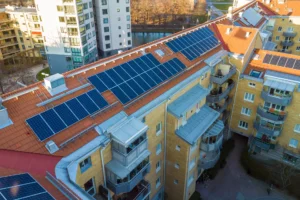
Can I Install Solar Panels On A Rental Property? Share: Facebook Twitter LinkedIn Pinterest As more individuals and businesses seek to reduce their carbon footprint,
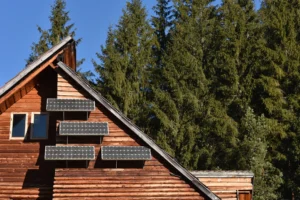
What Is The Difference Between On-Grid And Off-Grid Solar Systems? Share: Facebook Twitter LinkedIn Pinterest Solar power is becoming increasingly popular for individuals and businesses
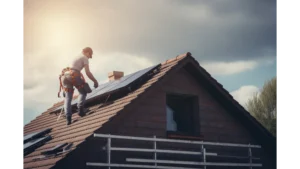
Will I Need To Get A New Roof Before Installing Solar Panels? Share: Facebook Twitter LinkedIn Pinterest As homeowners and businesses strive to reduce their
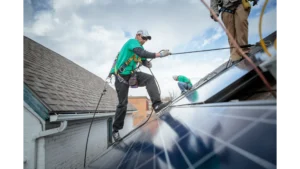
How To Find A Good Solar Panel Installer? Share: Facebook Twitter LinkedIn Pinterest Good Solar Panel Installer Solar panels have become popular for homeowners looking
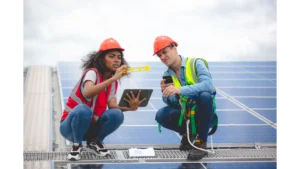
How Much Space Do I Need On My Roof To Install Solar Panels? Share: Facebook Twitter LinkedIn Pinterest Do I have enough Space on My